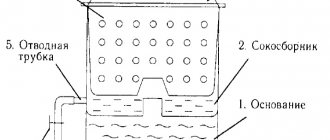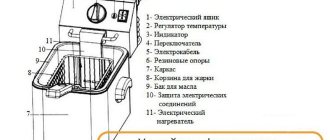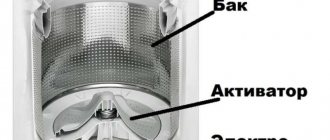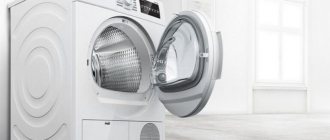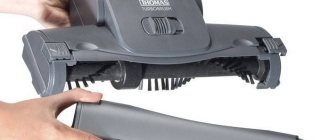What is it and how is it different from channel?
An axial fan is a device used in many areas.
It is distinguished by its versatility and simplicity. Its operation is based on an electric motor, which causes the rotation of the axis and blades that are attached to it. These fans can be domestic or industrial, which determines their size. Household ones are usually installed in residential premises and offices. They have blades several tens of centimeters in size. The most common are 100, 200, 300 mm. Industrial ones are much larger. Their blades can reach several meters in length. Such fans are installed in rooms with a large area.
Technical characteristics of devices are determined by GOST. For example, if we are talking about the materials from which certain parts of the fan are made. So, its blades can be plastic, aluminum, duralumin or stainless steel. The lighter the material, the less power the device requires to operate.
Duct fan is highly specialized equipment. It is used exclusively in ventilation systems, which is the main difference from axial fans. This type of device is installed inside or at the break of air ducts to pump air through the system. As a rule, it is the quietest among other types of fans.
Main selection criteria
Before purchasing equipment without blades, you need to familiarize yourself with its technical characteristics and the main selection criteria in order to select the optimal model that meets your individual needs.
Size
This parameter depends on the type of device, but generally they are produced in compact dimensions. Mini-units are so mobile that they can be placed in a car. Floor-standing units take up more space, their height can reach 55 cm, individual devices can be higher. Due to its small size, the device is easily transported and installed in a convenient place.
Power
This indicator affects energy consumption, air exchange efficiency and noise level. For large rooms, the best option would be a powerful device that will efficiently cool the space. In this case, loud work cannot be avoided, but the level of climatic conditions will be fully justified.
For large rooms, choose a powerful device
Air exchange
To ensure good air circulation in a spacious room, you don’t need to skimp on a cheap fan, because such equipment will have no effect. For large offices it is necessary to select models with an indicator of 250 m
3
/hour, and if the parameter is lower, the room will not cool completely.
Rotate the ring
When the working element is rotated relative to its axis, a greater coverage of the ventilated area occurs. The main part of climate control equipment is designed with a rotation angle of up to 90 degrees, but analogues are produced with an indicator that is an order of magnitude greater; their coverage can reach 360 degrees. Such equipment is capable of quickly creating the desired temperature in the room around the entire perimeter.
Number of speeds
Modern technology is equipped with wide functionality, including smooth adjustment of air supply speeds. A convenient option allows you to enjoy a comfortable coolness that gradually envelops the entire room. Models with different numbers of speeds are good for use if there are children. You can control the air supply that suits your baby.
Care and maintenance of the device
A fan without blades can last the period stated by the manufacturer in the instructions only if the rules of its operation are followed. It is easy to use and care
It is important to use the device for its intended purpose and not to move it from place to place during operation.
If you need to rearrange the equipment, then you should grab it by the body, and not by the blower.
To maintain the air multiplier, it is enough to periodically perform the following actions:
- clean the blower holes with a brush to prevent them from clogging;
- Wipe the blower and the device body with a damp cloth, removing dust and other contaminants.
Maintenance should be performed as needed. There is no need to use special cleaning agents or detergents - the surface of bladeless fans can be easily cleaned with a damp or dry soft cloth.
When operating the device, do not forget about safety measures and under no circumstances use it if it breaks down.
If a malfunction is discovered, you should contact specialists authorized to repair climate control equipment from a specific manufacturer.
Attempting to fix the problem yourself may void the warranty on the fan. If you lack experience in repairing such devices, you can cause even more damage to the equipment.
Bladeless fans are easy to clean from dust, foreign particles and pet hairs thanks to their original design
Advantages and disadvantages
Bladeless fans, like other models, have a number of advantages and disadvantages. Advantages:
- there are no exposed moving parts, this ensures the safety of children and animals;
- do not dry out the air;
- do not require maintenance.
Flaws:
- noise during operation is about 40 decibels;
- relatively high price;
- fragile body design.
3
Main advantages
A bladeless device has many advantages over a conventional fan. It is ideal for use in home and office spaces. The devices have the following positive characteristics:
- are silent and do not create vibration;
- there are no drafts during operation, they do not accumulate dust, since they do not have parts for this, which makes a fan without blades hygienic;
- horizontal and vertical rotation volume makes them very convenient to use;
- the devices are quite stable;
- due to the absence of external moving parts, they are considered safe, which eliminates injuries;
- low energy consumption, because they consume much less than blade fans;
- stand out for their modern design.
All of these devices are equipped with remote control, which makes them very convenient to use. The control panels are attached to the body so that it is convenient to operate and not lost. Almost all remote controls are equipped with various options where you can select the desired operating mode. This product helps you get fresh air flow at home and at work without noise or discomfort.
In addition to its advantages, the fan has its disadvantages: if you buy a more powerful device, it makes noise during operation, which is very noticeable at high speeds. The price of modern models is high. If you buy cheaper analogues from Chinese manufacturers, they are unstable and creaky.
Manufacturers of bladeless fans are constantly working on existing shortcomings. They periodically improve new models, taking into account consumer feedback and suggestions.
This is interesting: How to remove gouache from clothes: the most effective home methods
Fan without blades
The original device is gradually gaining momentum among users who are already convinced that the unit works effectively.
Fan without blades: operating principle
Based on the appearance of the device, it is not immediately possible to understand its purpose. A fairly simple design effectively transmits powerful air flow. The air moves through the air intake, followed by exit from the opposite side at high speeds. An aerodynamic device is designed to create low pressure in order to roll out air flows at the inlet. The built-in turbine is used to quickly change air masses, so the equipment is more efficient than a conventional fan.
This type of device passes approximately 500 liters of air per second, and the supply is evenly distributed throughout the room. The creation of models was based on the operating principle of aircraft jet engines.
Healthy! Modern units do not take up much space in the room, but at the same time efficiently blow the room with a uniform air supply. They are easy to use; just read the instructions to fully understand the operating principle of the device.
Design
With the help of innovative technologies, the device is produced with various functionality. The design of different models may differ slightly, but all copies consist of the following parts:
- Frame;
- Blower element;
- Control Panel.
On the body there is a motor, which is responsible for the full operation of the device. The process of drawing in air is carried out through holes located on the base of the device.
The unit is controlled mechanically or electronically. Most models operate via remote control.
The control panel is equipped with the following functions:
- On/off key;
- Rheostat - designed to regulate speed;
- There are additional options depending on the functionality of the device and the manufacturer.
The blowing base is made in a round, oval or any other geometric shape. This part is produced in different sizes, depending on the model of the device.
Areas of application
It is used in everyday life, in production, and has no restrictions or special requirements for use.
The absence of blades makes such a device completely safe for health, so it can be installed even in kindergartens, schools, and hospitals. The small parameters of the equipment allow it to be used in private homes, country houses, and offices. Healthy! The device can be quite multifunctional and can be used for cooling, heating and even humidifying the air. However, this functionality is available in more expensive models.
Types of fan
There are three types of bladeless units; this division of devices is based on their installation principle:
- Floor. Placed on the floor surface in any convenient place, it is distinguished by its ability to replace low-power air conditioners. Easy to install and manage. The required power, airflow and rotation speed of the housing can be easily adjusted;
- Desktop. The most popular type of air multiplier, which does not take up much space and fits perfectly with any room interior. Produced in original designs that perfectly dilute boring everyday life. The height of the unit ranges from 50-55 cm, and the diameter of the ring does not exceed 30 cm. Compact equipment will provide the required climate in small rooms;
- Mini. Due to their compactness, they are easy to transport to any location. They are the optimal solution for replacing air conditioning in cars.
Advantages and disadvantages
Any household appliance has its positive and negative sides. When purchasing such a device, you should know the advantages and disadvantages and choose the device based on these factors.
- stability - the motor is located on a reliable leg, due to which it does not fall;
- high level of safety - in the absence of rotating parts you cannot get hurt;
- productivity - climatic requirements are achieved in a short period of time, and the room is cooled evenly throughout the room;
- original design;
- compactness - can be installed in any convenient place;
- economical - consumes little electricity;
- does not dry out the skin;
- practicality in care - easy to clean, because there are no small parts;
- The blowing power is adjusted.
- increased noise level, minimum 40 dB;
- quite an expensive pleasure.
How does a bladeless fan work?
The strange futuristic “ring on a leg” actually consists of three parts. They are structurally and mechanically assembled in such a way as to provide air blowing and blowing.
The “leg” of a fan without blades is actually its housing with a control panel. The housing contains a motor for air intake and a small grille through which it is taken in. On the control panel there is a power button and, optionally, a rheostat for adjusting the ventilation intensity (the classic Dyson fan does not have one).
We recommend reading: Design and principle of operation of an electric home heating boiler
But the “ring” itself is the so-called blower. The inside of the ring has a special shape: along the entire contour there is a channel through which air moves. We’ll tell you why this is necessary now.
Classification of fans according to basic parameters
Fans are mechanical devices designed to move, supply or exhaust air and gas masses. Air circulation occurs due to the pressure difference between the inlet and outlet channels of the ventilation unit.
Fans are used everywhere. The devices are indispensable when arranging the supply and exhaust ventilation complex of a building, blowing working elements in air conditioners and heating devices.
The fans are designed to work with gases whose compression ratio does not exceed 1.15. At the same time, the difference in pressure indicators at the inlet/outlet is limited to 15 kPa - for a larger value, a compressor is used
The general classification of ventilation units is based on different parameters.
Among the main gradation criteria are:
- design and operating principle of the device;
- purpose and operating conditions of the fan;
- installation method;
- methods for connecting the device to the electric motor;
- technical features: IP degree of protection, generated pressure, power consumption, rotation speed, efficiency and acoustic pressure level.
Based on the type of design, there are five modifications of fans: axial, centrifugal, diagonal, diametrical and bladeless.
Diagonal and diametrical units are considered a variation of two main groups of ventilation units: axial and centrifugal. New bladeless products are fundamentally different from their counterparts
Based on operating conditions, the following types of gas blowing machines are divided:
- general use appliances;
- fans for special purposes.
The first group includes units designed to work with air and inactive gas flows, the temperature of which does not exceed +50°C. The second group includes special equipment: heat-resistant, explosion-proof, dust-proof, corrosion-resistant and smoke-removing.
According to the installation method, they are distinguished:
- standard – installation is carried out on a support;
- roof - installation on the roof of a building;
- duct – placed inside the ventilation duct;
- multi-zone - models designed for connection to several air channels.
Electric motors are used to drive the ventilation unit.
There are several possible ways to couple the engine to the impeller:
- direct connection;
- V-belt transmission;
- stepless hitch.
After determining the appropriate type of fan, a model with optimal technical characteristics is selected.
The service area, installation location, permissible noise level, room humidity, and the need to protect the device from foreign objects are taken into account.
Design and operation of a bladeless device
A fan without blades is often called a Dyson fan in honor of its creator or, as he himself called the device, an Air Multiplier. This original invention is in demand due to its ability to create a uniform air flow and fit perfectly into any interior.
The multiplier looks stylish, and the presence of analogues on the market makes it accessible to a wide range of consumers.
Image gallery
However, the price of such new products exceeds $300.
Depending on the model, the device itself will differ. After all, the more functions it can perform, the more buttons there will be on the control panel.
A fan without blades consists of the following parts:
- frame;
- control Panel;
- blower
The housing contains a motor that is responsible for the operation of the device. There are also special holes on this part through which air will be drawn in when the multiplier is turned on.
The appearance of the device from all manufacturers may differ significantly, as well as size, functionality and cost.
The fan can be controlled mechanically or electronically using a panel. In most cases, remote control is provided. Many models from various manufacturers are equipped with a remote control that operates, on average, at a distance of 3 meters.
The control panel provides:
- on/off button;
- rheostat for adjusting the speed of operation;
- other buttons depending on the multiplier model and the functions provided by the manufacturer.
The blower has a round or oval shape. Its size depends entirely on the model of the product. This part of the fan can have a clear geometric shape or be in the shape of a heart, apple, etc.
Air multipliers can be divided into 3 types based on installation method:
- floor;
- desktop;
- wall-mounted
The first 2 types refer to portable devices, and the last one to stationary devices. Manufacturers often provide two options for one model: wall mounting and table mounting. In this case, the fan must be equipped with brackets and dowels.
When hanging the device on the wall, it is important to use the components offered by the manufacturer. Otherwise you may lose your warranty
Dyson fan: operating principle
Bladeless fans are capable of passing through up to 500 liters of air in 1 second. The outlet flow is evenly distributed, gently enveloping the entire space. During a visual inspection, no moving parts are observed outside the operating device. This is exactly what an air multiplier looks like at first glance.
The principle of such efficient operation of a bladeless fan is the multiple multiplication of drawn-in air at the outlet. This occurs due to the special shape of the blower and the presence of a specially shaped hollow channel inside it.
Among the manufacturers offering their bladeless equipment are the following companies: Flextron
,
SUPRA
(Supra),
UNISVET
,
Clever and Clean
,
Roward
,
Dyson
,
Coolguy
,
Aaron
,
RENOVA
,
Orion
,
Bladeless
,
BiLux
,
MAGNIT
.
The price range of bladeless devices from these companies is from 2,000 to 35,000 rubles or more.
An important characteristic that affects the level of comfort when using a fan is the noise level. It can be 40 dB, 55 dB, 60 dB or more
This is the most important parameter that should be taken into account before purchasing
When the fan noise is 60 dB or higher, a person will feel tired and may have a headache after just an hour of operation.
Manufacturers indicate the noise level of a specific model in the technical specifications. Moreover, this is the maximum level that is achieved when the equipment operates at maximum speed. For cheap devices, the declared noise level may not correspond to reality.
Review of models on the market
Let us give as an example several models of devices available on the Russian market.
Bladeless Fan, a small, inexpensive bladeless desk fan. Made in China. The cost is about $40-$50. A minimum of functions and low power (12 W) allow you to obtain an air flow that is quite acceptable for desktop devices.
Relatively inexpensive Chinese Bladeeless Fan
Another budget option with a minimal functional set is Fan Leader, which, according to suppliers, is made in Poland. Also in a desktop version, in the same price range, but slightly higher power - 35 W. A characteristic feature is that the working area is made in the shape of an oval. Note that this form is found in many models, for example, Orion OR-DSO2.
Fan Leader
Well, for comparison, let’s look at the original design - the Dayson Hot + Cool model. This device is available in a floor-standing version. It has an air heating function. Turbine power is 40 W, in heater mode – 2 kW. There is a remote control, an information board indicating the selected mode and the set temperature. For all this pleasure you will need to pay about 500 – 540 dollars.
A fine example of original Dayson Hot + Cool products
Concluding the topic of the review, we present a comparative table of the Dynson model range and the Chinese analogue Unico ION.
| Name | Dyson AM-01 | Dyson AM-02 | Dyson AM-03 | Dyson AM-04 | Unico ION |
| Estimated Cost, $ | 260 | 310 | 340 | 345 | 50 |
| Functionality | cooling | cooling | cooling | cooling/heating | cooling |
| Air flow speed (max), l/s | 450 | 600 | 700 | 130 | 450 |
| execution | desktop | Floor | Floor | Floor | Desktop |
| Manual tilt angle adjustment | + | — | + | + | + |
| Manual height setting | — | — | + | — | — |
| Automatic 90° turns | + | + | + | + | + |
| Smooth flow speed adjustment | + | + | + | + | + |
| Noise level (max), dB | 64,5 | 63,0 | 65,0 | 64,0 | 60,0 |
| Power consumption (max), W | 40 | 65 | 65 | 2000 | 35 |
| Packaging dimensions, mm | 547x356x152 | 1007x190x110 | 1480x450x280 | 579x200x153 | 580x330x180 |
| Weight (gross), kg | 1,80 | 3,35 | 4,30 | 2,47 | 2,50 |
Device structure
The simplest device for forced air circulation in a room is a fan - an impeller with blades mounted on a motor shaft without a gearbox. All fans with open blades have a very unpleasant “side effect” - noise that occurs due to a sharp change in the speed and direction of the air flow on the blades. At low speeds the sound resembles the hum of a low-flying airplane, at high speeds it sounds like a whistle.
The famous English scientist James Dyson worked for a long time to create a device for indoor air convection that operates without noise and drafts. He tested Nikola Tesla's idea of accelerating air flow using a high-frequency, high-voltage electric field. The scientist soon abandoned this idea - high voltage required good insulation and created toxic oxides of nitrogen and metals due to a glow discharge between the electrodes.
The second idea Dyson tried was his own. He wanted to create a fan without the main drawback - increased noise during operation, resulting from a sharp change in the speed and direction of air flow. The scientist made the fan housing, reminiscent of an airplane wing in profile, in the shape of a ring with a slit-like slot for air to escape around the circumference. A high-speed air turbine without blades, similar in design to a water mill, is located at the bottom of the housing. It sucks air through the slots and supplies it to a second high-pressure turbine located at the top near the ring. Compressed air escapes at high speed through a narrow slot in the plastic ring.
The pressure drop as air exits through the gap, which resembles an airplane wing in profile, twists the surrounding air into a spiral. A powerful air spiral, similar to a large donut, moves forward along the axis of the ring, intensively entraining the surrounding air according to Bernoulli's law and creating a zone of turbulence around itself.
Bladeless fan turbine design is protected by patent
, therefore, it is not possible to describe in detail the structure of the main assembly of a bladeless fan. According to information from open sources, it is known that the fan turbine uses Air Multiplier technology. According to independent examination, the type of bladeless fan is one of the quietest and most economical. It is ISO certified.
Design and principle of operation
In 2009, J. Dyson presented the world with his own fan development. The design feature was the absence of blades, which, however, did not prevent the device from creating a stable air flow. Moreover, the volume of air at the outlet exceeded that entering the turbine by one or two orders of magnitude. Do you think it's magic? No, everything is much more serious - aerodynamics.
It's all about the profile of the ring; it is given a special shape.
Bladeless Fan Ring Profile
Thanks to this, the air coming out of the holes is focused in such a way that a low pressure zone is formed in front of the ring (highlighted by a red oval in Fig. 3).
Rice. 3. Aerodynamic modeling of the operation of the Dyson Air Multiplier
Since such an area is surrounded in front and on the sides by increased pressure, air is drawn in from the back of the ring, forming a steady directed flow.
Note that it took Dyson about four years to compile a mathematical model of the profile that would allow achieving maximum effect and finalizing the technology. Most Chinese analogues of its device cannot produce even half the power of the original device. The inventor patented the design, in particular, the profile of the ring and the structure of the turbine that pumps air, so in order to make full-fledged copies it is necessary to purchase production rights from the author.
Design and principle of operation
The first ceiling fan appeared in 1860 in the USA and was a two-bladed device that was attached to the ceiling and was a real salvation from the heat. Today, ceiling fans come in two designs.
- The first type is represented by axial models, the principle of which is to capture air masses using an impeller and their further advancement along the axis of rotation. In this case, the intensity of the passage of air flows is ensured by the positive angle of attack of the oncoming blades.
- Centrifugal models work differently. In such devices, air is captured with the help of advancing blades and, under the action of centrifugal force, is pushed out in the radial direction relative to the axis.
According to their functional purpose, ceiling fans are either bladed or exhaust.
- Vane models consist of an electric motor, a plastic or metal body and an impeller, which includes an axis and blades. The fan is fixed to the ceiling using a strip, which is a decorative trim and covers the fastening mechanism. In addition, many models are equipped with a remote control function and are equipped with a remote control and switches.
- Exhaust devices also consist of an impeller and an electric motor and are additionally equipped with a decorative grille that covers the working parts of the device.
The operating principles of a ceiling fan and an air conditioner are fundamentally different from each other. And if the air conditioner ensures that the internal air temperature drops to a predetermined value, then when the fan is running, this indicator remains unchanged. The cooling function of the device is due to its ability to create a continuous flow of air, which ensures enhanced evaporation of moisture from human skin and does not allow the body to overheat.
Maintaining a stable temperature regime is achieved by mixing cold downward flows with warm masses going to the ceiling. For their ability to mix multidirectional air flows within one room, ceiling fans are called mixing fans. However, in order to mix fairly impressive volumes of air, powerful work and a large blade span are required, which is why many devices are equipped with folding blades.
The second type of ceiling fans is represented by exhaust devices, the operating principle of which is as follows: a device installed in the ventilation duct removes exhaust air outside. As a result, a zone of low pressure is formed inside the room, which promotes an active influx of fresh air masses into the rarefied space of the room. Air begins to be drawn in through vents, windows and supply channels, due to which the entire air volume of the room is completely replaced in a short period of time.
Some high-end models are equipped with a variable-pitch impeller. Thanks to this design feature, it is possible to synchronously change the angle of attack of the blades without stopping the electric motor. This helps to significantly reduce noise in the room and allows for more precise control over the intensity and direction of air jets. In addition, many models are combined into a single unit with lighting fixtures, which significantly increases the functionality of ceiling fans.
Ceiling devices operate in summer and winter modes. In the first case, the fan serves to cool the people in the room, and in the second it contributes to a more uniform distribution of hot air when heating the room with convector systems. The devices have a high level of protection IP 65, which allows them to be installed in kitchens, bathrooms, showers and other rooms with high humidity. In addition, unlike air conditioners, hanging fans can be installed on open terraces and outdoor verandas. The noise level of most models does not exceed 30 dB.
Advantages of the device
The main advantages of such a climate control device are the following factors.
- Sustainability. The center of gravity falls on the footrest, where the motor is located. This gives stability to the structure and will prevent it from falling if the device is accidentally caught.
- Safety is ensured by the absence of rotational elements.
- High performance. The device is able to quickly create a comfortable indoor climate by evenly distributing cooled air throughout the space. By installing a floor fan near the window, the room will always be fresh and cozy.
- Low energy consumption will save energy costs.
- Ease of maintenance. Due to its simple design and the absence of small parts, the device is easy to clean from dust with a regular dampened cloth.
Despite the fact that such a fan appeared on the market relatively recently, it confidently occupies its niche in the consumer range. Customer reviews are only the most positive, but most of all it amazes with its creative appearance, thereby attracting special attention. Unlike a conventional fan, it distributes air masses evenly and gently, creating a comfortable atmosphere in the room. The power of the device allows you to quickly refresh the climate, while not drying out the skin during prolonged use.
Thanks to low energy consumption, you can allow the device to operate continuously in sultry heat.
A variety of climate control equipment allows you to choose the most optimal device that meets your expectations. A turbulent blower, due to its high efficiency and power, can replace an air conditioner, but at the same time it is significantly lower in cost and free of charge.
Options when selected
For low ceilings, it is necessary to choose fans with a short shaft.
The diameter of the blades plays a role. Several units are installed in a large room or hall to achieve the desired effect.
The size is selected depending on the parameters of the room and purpose:
- small rooms (2.5 x 3.0 m), bathrooms, kitchens, bathrooms - 30` (762 mm);
- medium rooms (3.6 x 5.0 m) – 42`(1066 mm);
- large areas (5.5 x 6.0 m) – 52`(1320 mm).
Noise produced
To reduce the noise of the device, it is necessary to tighten all fasteners on the case.
Sometimes fans hum and cause discomfort to those present. To make it quieter, you need to balance the units.
Procedure:
- turn off the device and wait for the impeller to stop;
- check and tighten the blade fastenings;
- remove dust from the surface, especially in the upper area (the layer puts pressure on the bearings and causes a squeaking sound);
- check the rubber gaskets in the assembly of the impeller to the metal flange;
- the blades are placed at the same level using a balancing kit, which is available in stores; the kit is used according to the instructions.
There is a ceiling-mounted room fan with a DC motor. Such units are low-noise and feature quiet operation.
Speed direction and rotation
The direction of movement of the impeller determines the movement of air flow throughout the room. Summer and winter operating modes depend on this.
Reversible suspended units are divided into types:
- with manual switching of the direction of rotation;
- using a remote control.
In the first models, the switch is located on the body; for cooling, the handle is placed down, and for mixing heated and cold air, the handle is placed up.
Blade type and shape
You can choose a fan with any blade shape for your room.
The device moves more air as the wing area increases. But a wide surface reduces the gap between the blades and reduces the degree of flow intake. If the fan has more than six flat elements or they have a peculiar palm tree shape, the installation does not always cope with shoveling the air mass.
Possibility of replacing blades
The impeller is replaced if the device does not move air flow well and does not cope with the task.
To change the blades, you need to disassemble the fan:
- the front mesh is unscrewed and removed;
- the propeller is disconnected, which is secured with a nut with a left-hand thread;
- the rear safety net is removed;
- the box fasteners are unscrewed, the engine is lubricated and a new impeller is installed.
The rotation of the central rod is checked, the fan housing is mounted in reverse order.
Rotational speed
The power and rotation speed are indicated in the technical data sheet of the device.
The speed of rotation of the impeller shows the speed of the fan motor. With an increase in the number of turns over a period of time, the effectiveness of the blowing increases. Speed controllers are used, which include a backlight with a button and a handle for coordination. The device shows the working or non-working status of the fan.
The regulator allows you to stop or turn on the suspended turbine without changing the speed and change the speed without turning off the device. One regulator can be installed on two units, but the power of the devices should not be greater than that of the coordinator.
Power
Productivity shows the amount of air mass moved by the unit in 1 hour of operation, measured in m³/h. For large rooms, powerful devices are installed to achieve air movement in remote points and corner areas.
Additional functions
There are combined models - chandeliers-fans.
Most units provide height adjustment, tilt in the horizontal and vertical planes and an automatic reversal function.
Additional devices in hanging fans:
- The electronic timer sets the clock, programs the mode for a day or a week, changes occur automatically.
- Chandelier fans are equipped with a low-power battery, which does not ensure rotation of the blades, but guarantees illumination for two hours during a power outage.
- Built-in motion sensors trigger the installation when people appear in the room.
An automatic humidity reader is installed in the bath for an extraordinary start. Models are equipped with a high-frequency ionizer and atmosphere flavoring.

